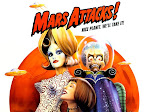
Small Baby Carrots - why waste an ugly carrot?
IMPORTANT, Fred. You pass this along to others.
The following is information from a farmer who grows andpackages carrots for IGA, METRO, LOBLAWS, etc. The small cocktail (baby) carrots you buy in small plasticbags are made using the larger crooked or deformed carrotswhich are put through a machine which cuts and shapes theminto cocktail carrots - most people probably know thisalready.. What you may not know and should know is the following:Once the carrots are cut and shaped into cocktail carrotsthey are dipped in a solution of water and chlorine in orderto preserve them) this is the same chlorine used in yourpool).
The following is information from a farmer who grows andpackages carrots for IGA, METRO, LOBLAWS, etc. The small cocktail (baby) carrots you buy in small plasticbags are made using the larger crooked or deformed carrotswhich are put through a machine which cuts and shapes theminto cocktail carrots - most people probably know thisalready.. What you may not know and should know is the following:Once the carrots are cut and shaped into cocktail carrotsthey are dipped in a solution of water and chlorine in orderto preserve them) this is the same chlorine used in yourpool).
Since they do not have their skin or natural protectivecovering, they give them a higher dose of chlorine. You will notice that once you keep these carrots in yourrefrigerator for a few days, a white covering will form onthe carrots. This is the chlorine which resurfaces. At what cost do we put our health at risk to haveesthetically pleasing vegetables? Chlorine is a very well-known carcinogen, which causesCancer.
I thought this was worth passing on. Pass it on to as manypeople as possible in hopes of informing them where thesecarrots come from and how they are processed. I used to buy those baby carrots for vegetable dips and to cook with them.I know that I will never buy them again!!!!
I like baby carrots, they taste really good and they work well as practical healthy snacks. However, I never knew that baby carrots are not actually young carrots. In fact, baby carrots are small pieces of carrots that are chopped and whittled down to look like small carrots. They are peeled and washed, to make them ready to be eaten. Carrots don't always grow in perfect shapes, so the ones that look lumpy, dumpy and ugly just won't sell even if they taste good. Mike Yurosek, a farmer from California, was sick of throwing away tons of imperfectly shaped carrots from his farm. That's when he came up with idea of cutting those ugly carrots into small pieces with a uniform appearance. He came up with this clever idea in 1986. And since then Yursek continued his efforts in brining baby carrots to the shape and taste that they are today. He actually managed to bring those non-selling carrots into baby carrots that would bring more money to his farm than regular carrots do.
Is this dangerous? No. Chlorination is a well-known and well-tested way to disinfect food products. Our tap water is chlorinated as well. I would nevertheless like to issue a warning. When you disinfect something, that means that you kill the bacteria that are present. Chlorine kills bacteria. It can also kill us, or be very bad for us. The bleach you use to clean and disinfect your toilet, contains chlorine. Do not drink it. This will kill you because it is far more concentrated than we can safely ingest. The chlorine in your tap water and in your baby-carrots, presents no danger whatsoever. It is precisely to make the carrots safe that the chlorine is used. As a side-note, it is interesting to know that the term chlorine is something of a misnomer. Chlorine, in its natural state, is a highly reactive gas that forms compounds with other products. When chlorine is added to other products, it will react virtually immediately to form compounds such as hypochlorous acid (when chlorine is added to water) and sodium hypochlorite (when chlorine is added to a sodium hydroxide solution). These compounds in turn disinfect the water. When we talk about chlorine, and even about free chlorine, these compounds are usually what we are referring to. What about the white covering? Is that really the chlorine that resurfaces? No. It is simply the carrot drying out. Try it out for yourself. Take a fresh, normal carrot and cut it in half. Wait. The same white covering (which is officially called white blush) will appear on the cut. Baby carrots will show a lot more white blush for a very simple reason: their skin has been removed and therefore, the entire carrot dries out. Now, what about the "practically plastic" claim? This means nothing. It doesn't even make sense here. My best guess is that the person who wrote the text, either wanted to make it sound even more terrible, or that he or she had heard a rumour about chlorine being an ingredient in plastics (PVC = polyvinyl chloride is a good example). There is absolutely no plastic in baby carrots. What about the cancer claim? The question is a valid one, especially because we know that there are certain compounds of chlorine that do cause cancer. Does chlorine cause cancer? No. While medical science is not an exact science, and we must always be vigilant, there is at present no evidence whatsoever that chlorine causes cancer or could be a facilitator for cancer. The Department of Health and Human Services (DHHS) the International Agency for Research on Cancer (IARC), and the Environmental Protection Agency (EPA) have not classified chlorine as to its human carcinogenicity. In other words, chlorine is perfectly safe, if it is used appropriately.
Now for the fun one: History of Baby Carrots!





































No comments:
Post a Comment